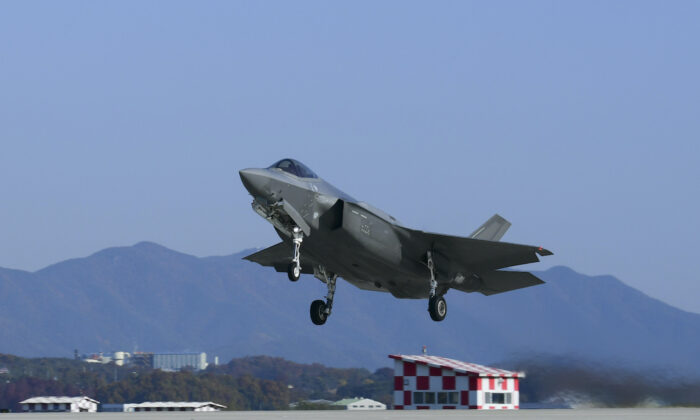The South Korean Joint Chiefs of Staff stated that the Russian and Chinese aircraft entered the area in sequence and exited without incident.
South Korean fighter jets scrambled as 11 Russian and Chinese military aircraft entered South Korea’s air defense identification zone on Friday for more than four hours, according to the South Korean military.
The air defense identification zone is different from the nation’s airspace, which the military aircraft did not breach. Russia and China do not recognize South Korea’s defense zone as South Korean territory. The two countries regularly hold joint air drills.
The South Korean Joint Chiefs of Staff stated that the Russian and Chinese aircraft entered the area in sequence and exited without incident.
South Korea’s military had identified the aircraft before they entered the zone and deployed air force jets, which conducted tactical maneuvers in response, it said.
South Korea, the United States, and other blocs in the international community have expressed concern over increasing military cooperation between Russia, China, and North Korea.
The United States has already sanctioned many Chinese entities over supplying and financing Russian entities in the war against Ukraine, effectively allowing Russia to evade international sanctions.
Last week, the head of the U.S. Indo-Pacific Command said that Russia is likely to help advance the Chinese military in exchange for its support, echoing concerns that U.S. Deputy Secretary of State Kurt Campbell raised over the summer.
“I expect Russia to provide submarine technology to the PRC that has the potential of closing American undersea dominance to the PRC,” Adm. Samuel Paparo said at the Halifax International Security Forum, using the acronym for the People’s Republic of China.
Paparo said that China “has rebuilt, helped to rebuild Russia’s war machine, with 90 percent of its semiconductors and 70 percent of the machine tools that have rebuilt that war machine.”
Russia has also secured support from North Korea, with the United States confirming that 10,000 North Korean troops had reached Kursk. The United States said on Nov. 18 that this was an escalation in the Russia–Ukraine conflict.
“It has been Russia that has escalated the conflict time and time again,” State Department spokesperson Matthew Miller told reporters at a regular briefing.
“That is a major escalation by Russia bringing in an Asian military to a conflict inside Europe.”
Miller said the United States will respond firmly.
International officials have also warned that Russia is helping North Korea with its own military ambitions.
NATO Secretary-General Mark Rutte said on Nov. 7 that in return for the military support, Russia is likely to provide North Korea with its latest technological innovations, posing risks not only to the U.S. mainland and continental Europe but also to NATO partners in the Indo-Pacific, such as Japan and South Korea.
“China, North Korea, Russia, and, of course, Iran—this is more and more a threat not only to the European part of NATO but also to the United States, because Russia is delivering the latest technology into North Korea in return for North Korean help with the war against Ukraine,” Rutte told reporters before meeting with European leaders in Budapest, Hungary.
South Korea later confirmed that Russia gave anti-air missiles to North Korea in exchange for its troops.
Russian Defense Minister Andrew Belousov landed in North Korea for additional military and political talks on Nov. 29, with state media citing Belousov as saying military cooperation between Russia and North Korea was actively growing.
Frank Fang, Dorothy Li, and Reuters contributed to this report.

